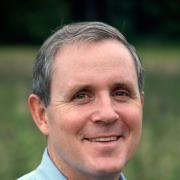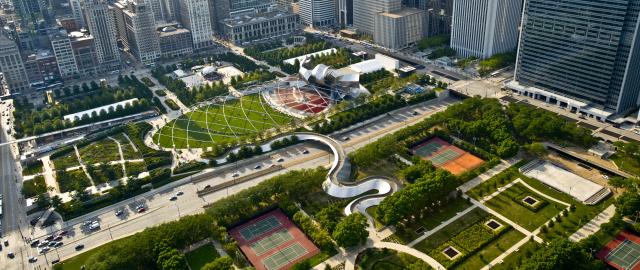Science and Management of 21st Century Urban Parks
About the Conference
The Hixon Center for Urban Ecology at the Yale School of Forestry & Environmental Studies in partnership with the NYC Urban Field Station and 21st Century Parks is convening this conference to explore the future of urban parks given projections of increasing urbanization. Leading researchers, investors and land managers will explore a range of possibilities to meet needs for future populations including how science can guide better design solutions, and the role of private investment in public lands.
Speaker Information
Sir Peter Crane is the Carl W. Knobloch Jr. Dean of the Yale School of the Environment. He is known internationally for his work on the diversity of plant life – its origin, fossil history, current status, conservation and use. He received his BSc and PhD degrees in botany from the University of Reading, UK and served on the faculty of that university from 1978 to 1981. In 1981 he moved to Indiana University, and from 1982 to 1999 he was at the Field Museum in Chicago. From 1992 to 1999 he served as Director of the Field Museum with overall responsibility for the Museum’s scientific programmes. He also established the Office of Environmental Programs and the Center for Cultural Understanding and Change at the Field Museum. From 1999 to 2006 Peter Crane was Director of The Royal Botanic Gardens, Kew one of the largest, most prestigious and influential botanical gardens in the world. In 2002 Kew was inscribed on the UNESCO list of World Heritage Sites. His tenure at Kew saw strengthening and expansion of the gardens’ scientific, conservation and public programmes on the variety of plant life as well as major improvements to the infrastructure for collections, science, public and staff. From 2006 to 2009 Peter Crane was the John and Marion Sullivan University Professor at The University of Chicago. He was elected to the Royal Society – the UK academy of sciences in 1998 and was knighted in the UK for services to horticulture and conservation in 2004. He is a Fellow of the American Academy of Arts and Sciences, Foreign Associate of the US National Academy of Sciences, a Foreign Member of the Royal Swedish Academy of Sciences, and a Member of the German Academy Leopoldina. He is the recipient of several honorary degrees from universities in the UK and US, including an honorary doctorate of science from Cambridge University. Peter Crane currently serves on the Board of the Global Crop Diversity Trust, the Chicago Botanic Garden, the Lady Bird Johnson Wildflower Center at the University of Texas, WWF-US, and the Gaylord and Dorothy Donnelley Foundation. Recently, Dean Crane was awarded the 2014 International Prize for Biology administered by the Japan Society for the Promotion of Science (JSPS) for his work on the evolutionary history of plants. The honor is awarded annually to individuals who have made outstanding contributions to the advancement of research in fundamental biology.

Abstract
The Future of Parks and Public Space
Parks and public spaces have a long history in the United Sates that date back to the 19th century. As the country urbanizes and demographics of the American population shifts, parks and public spaces are gaining greater importance as places for physical health, mental health and social interaction. New York City has embarked on a new strategy to address the future of parks and places that is redefining the role of public space in the 21st century.
Speaker Information
Mitchell J. Silver became Commissioner of the New York City Department of Parks and Recreation in May 2014. Commissioner Silver is also the immediate past president of the American Planning Association (APA). He is an award-winning planner with almost 30 years of experience and he is internationally recognized for his leadership in the planning profession and his contributions to contemporary planning issues. He specializes in comprehensive planning, place making and implementation strategies. As Parks Commissioner, Mitchell Silver oversees management, planning and operations of nearly 30,000 acres of parkland, which includes parks, playgrounds, beaches, marinas, recreation centers, wilderness areas and other assets.
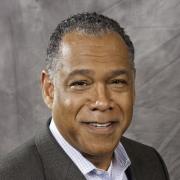
This panel will explore the impact of ‘edges’ on urban parks, including the internal edges of collapsing centers in cities with declining population, as well as cities with increasing population and expanding edges. Panelists will discuss changes in temporal scale (demographic shifts) and changes in spatial scale, and how shifting boundaries will create questions of urban park planning for future needs and opportunities.
Abstract
Interesting Times, Difficult Choices and Unexpected Opportunities
Detroit, Michigan, presents an ongoing case-study of the effects of shifting population over a prolonged period on urban parks. Detroit’s population has fallen from a peak of 2.2 million residents in the 1950s to an estimated 680,000 residents in 2014. As population declined, remaining residents migrated, vacant space proliferated, and Detroit found itself with an abundance of green spaces, both planned and unplanned, nearly all of which were inadequately maintained. Then, almost unbelievably, through a cloud of political and financial drama, a few Detroit neighborhoods began to see population gains. Against this background, Detroiters have been presented with both difficult choices and unexpected opportunities regarding its parks and open space. For the first time in 300 hundred years, Detroit finds itself considering where parks should be placed, and how to design and use open space so that it provides multiple benefits for the environment and the citizenry. This presentation will include a discussion of the opportunities that have emerged as a result of population shifts in Detroit and the associated community based planning and engagement strategies that have been most effective in initiating the responsible redesign of Detroit’s green spaces.
Speaker Information
Rebecca Salminen Witt has served as the President of The Greening of Detroit since 1996. The Greening of Detroit is a 25 year old non-profit environmental organization working to secure Detroit’s ecosystem by coordinating design and installation of green infrastructure, supporting community based urban agriculture, providing outdoor and nutrition education to Detroit schoolchildren and sponsoring green jobs training programs for teenagers and adults. Rebecca finds inspiration in Detroit’s people and its possibilities. For the past 19 years she has turned inspiration into action by guiding The Greening’s growth from a staff of three with an annual budget of $235,000 to a 42-person, $6 million per year operation, planting 5,000 trees, reclaiming an average of 10 acres of vacant land, harvesting thousands of pounds of produce, providing nutrition and environmental education to nearly 10,000 children, recruiting 7,000 volunteers and placing 150 Detroiters in green jobs each year. Rebecca holds a Bachelor of Arts degree from Michigan State University and a Juris Doctorate from Wayne State University Law School in Detroit. She contributes to the international blog site, The Nature of Cities, and has inspired audiences to action at venues all over the world, speaking throughout the United States and in Denmark, Sweden, Germany, Portugal, Australia, Canada, the Netherlands and France.
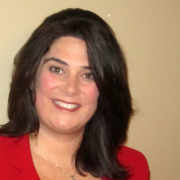
Abstract
Baltimore is at a critical juncture in its ongoing journey to improve the quality of life for its existing residents and to chart a course toward sustainable fiscal health, environmental quality and population growth. The people of Baltimore have been rocked by the nationally-publicized violence that occurred here on April 27, 2015, when the destruction of property unearthed a chronic disconnect between generations, a fissure between citizens and government and a heart breaking disaffection for the neighborhood as home. Most challenging for the City is management of 30,000 vacant lots and buildings, heavily concentrated in areas with severely distressed real estate markets, located in neighborhoods that are damaged and disconnected. The focus of the presentation will be a pilot effort in the once densely populated neighborhood of Harlem Park in West Baltimore where residences and churches are now interspersed with vacant and abandoned properties. A public-private, state-local partnership has been working to synchronize existing neighborhood greening and community revitalization efforts with innovative funding to identify distinct place-making opportunities that can be installed within a short time frame to restore and reconnect urban fabric of the neighborhood while addressing water quality, heat reduction and other impacts of climate change. Projects that are complete or underway include safe intersections, links to trails, new “inner block parks”, vacant lot revitalization, playgrounds and green infrastructure as part of a comprehensive, economically-efficient strategy to build on the unique strengths of an historic neighborhood while improving environmental performance and quality of life.
Speaker Information
Lisa Schroeder is President and Chief Executive Officer of the Parks & People Foundation, a not-for-profit organization, established over 30 years ago to revitalize Baltimore’s neighborhoods through hands–on cleaning and greening, park improvement projects and programs that have connected more than 30,000 children and youth with their natural environment. Lisa is an experienced executive with a career-long commitment to improving the quality of urban life and a record of achievement working in the public, private and not-for-profit sectors. Prior to joining Parks & People, Lisa led the growth of the Pittsburgh non-profit, Riverlife, from a start-up in 2001 into a civic force that invested $135M to transform 13 miles of industrial downtown riverfront into a continuous waterfront park system. Ms. Schroeder’s leadership implementing the “Vision Plan for Pittsburgh’s Riverfronts” into an urban asset that attracts millions of users earned her the AIA Gold Medal Award (2012); the Outstanding Women in Business Award (2011); and a “Top Environmental Hero” award (2009). Having moved back to her hometown of Baltimore, Ms. Schroeder’s vision for Parks & People is to focus assistance in neighborhoods where urban fabric is degraded to improve environmental, social and physical health for all Baltimoreans. From the base of Parks & People’s new 9 acre LEED campus in West Baltimore, she is helping the City launch a Citizen Task Force to create a new Master Plan for Baltimore’s Parks and Open Spaces. Lisa holds a BA from William Smith College and MS from Columbia University School of Architecture, Planning & Historic Preservation. She has also served as a Fellow at Carnegie Mellon University, John Heinz III College of Public Policy.

Abstract
Ecology IN, OF, and FOR the City: Shifting Urban Realities and Nature Beyond Parks
Cities have been conceived for a long time as something distinct from nature, and more recently perhaps, as even distinct from suburbs. This conception no longer holds, as cities now act as porous nodes within diffuse urban-suburban-exurban regions that themselves partake of global connections. Ecological perspectives on the urban have shifted as well, and that shift may be helpful both in promoting environmental integrity within cities and in larger urban regions. Urban ecology in the United States began as a child of the city versus nature contrast, with ecologists taking their wildland toolkit into town. This initial approach, labeled ecology IN the city, though foundational and still important, was soon discovered to be limited in addressing urban areas as social-ecological systems. Such spatially extensive areas required understanding the integrated feedbacks between what had formerly been perceived as discrete nature and city. This second, more inclusive approach is labeled ecology OF the city. With the spread of sustainability thinking and application in urban contexts, ecology OF the city is now acknowledged to be limited in its own way, and ecologists now join with social scientists, planners, designers, managers, policy makers, and civic institutions to craft and use an ecology FOR the city. Parks and their integration in the larger urban fabric and process, are an important tool for achieving the benefits of ecology FOR the city.
Speaker Information
Steward Pickett, a Distinguished Senior Scientist at the Cary Institute of Ecosystem Studies, in Millbrook, New York, is an expert in the ecology of plants, landscapes, and urban systems. He was awarded the PhD by the University of Illinois in 1977. He directs the Baltimore Ecosystem Study, Long-Term Ecological Research program, and co-directs the Urban Sustainability Research Coordination Network. His research focuses on the ecological structure of urban areas and the temporal dynamics of vegetation, which has taken him to the primary forests of western Pennsylvania, the post-agricultural oldfields of New Jersey, and the riparian woodlands and savannas of Kruger National Park, South Africa. He has edited or written books on ecological heterogeneity, humans as components of ecosystems, conservation, the linkage of ecology and urban design, the philosophy of ecology, and ecological ethics. He has served as President of the Ecological Society of America, as well has having been that organization’s inaugural Vice President for Science.
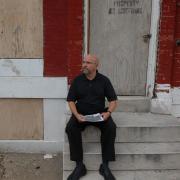
Speaker Information
An urban and land change scientist, Karen Seto is one of the world’s leading experts on contemporary urbanization and global change. She uses satellite remote sensing, field interviews, and modeling methods to understand how urbanization will affect the planet, including land change, food systems, biodiversity, and climate change. She has pioneered methods to reconstruct urban land use with satellite imagery and has developed novel methods to forecast urban expansion. She has conducted urbanization research in China for twenty years and in India for more than ten. Dr. Seto has served on numerous national and international scientific bodies. She was a coordinating lead author for the 2022 IPCC 6th Assessment Report and the 2014 IPCC 5th Assessment Report. For both reports she co-led the chapter on urban mitigation of climate change. She currently co-chairs the U.S. National Academies Climate Security Roundtable, established by the direction of Congress to help better understand and anticipate the ways climate change affects U.S. national security interests. She also co-chairs the U.S. National Academies Subcommittee on U.S.- China Scientific Engagement. From 2000 to 2008, she was faculty at Stanford, where she held joint appointments in the Woods Institute for the Environment and the School of Earth Sciences. She has received many awards for her scientific contributions, including the Outstanding Contributions to Remote Sensing Research Award from the American Association of Geographers.
Dr. Seto is an elected member of the U.S. National Academy of Sciences, the American Academy of Arts and Sciences, the Connecticut Academy of Science and Engineering, and a Fellow with the American Association for the Advancement of Science. She received a PhD in Geography from Boston University.
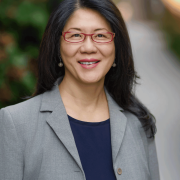
This panel will explore conventional park designs compared to more natural unmanaged systems. Speakers will examine how to strike a balance across the nature/people spectrum and will consider the divide of park designs – those that emphasize urban open spaces designed for people versus those that emphasize restoration projects. Different stakeholders can have completely different goals, and different professionals approach problems and solutions from different scale perspectives.
Abstract
Take a walk on the wild (and not so wild) side - preserving, improving, and expanding nature and sense of place
The Chicago Wilderness Region - spanning from Southeast Wisconsin through Northeast Illinois, Northwest Indiana and Southwest Michigan - is anything if not a complex, dynamic, ever-changing area due to development, demographic change - and climate. And nature can be found everywhere, from sidewalk cracks to large expanses of prairies, wetlands and woodlands. The relationship between people and nature is equally complex. Understanding - even embracing - climate forecasts and critical actions needed to ensure resiliency and preserved and improved quality of life is imperative for a successful, ever changing region. Understanding and embracing the social, physical, health, and economic layers of the region is critical to compel investment and action for a healthy, sustained natural world.
Speaker Information
Suzanne Malec-McKenna is Executive Director of Chicago Wilderness, a regional alliance of more than 200 organizations that preserves, improves, and expands nature and quality of life in the region. Throughout her 25 years of experience, she has maintained special emphasis on natural resources and water quality; communications; environmental education, stewardship, and enforcement; and sustainability efforts—especially those that intersect with successful business development and community engagement. Prior to joining Chicago Wilderness, Suzanne served as Deputy Commissioner and Commissioner for the City of Chicago’s Department of Environment, during which time she helped create and oversaw the implementation of the Chicago Climate Action Plan, the Chicago Conservation Corps, Greencorps Chicago, and spearheaded the City’s Calumet initiative. She worked with the Illinois Department of Natural Resources’ Millennium Reserve Steering Committee to develop a plan for the Millennium Reserve Calumet Core, and also worked with The Morton Arboretum to initiate an urban forest strategy for the Chicago region. She has a bachelor’s degree from the University of Illinois, Urbana-Champaign, and holds a master’s degree and Ph.D. in Communications from Northwestern University in Evanston. In addition to being a nature lover and resiliency advocate, Suzanne is a mighty fine cook, gym rat, mom, and eternal optimist.
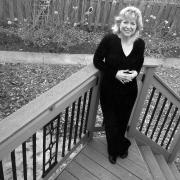
Abstract
Let History be Our Guide: Is there a role for US parks in conserving historical ecosystems?
Attempts to conserve biodiversity in restored ecosystems seem a somewhat quixotic objective in a world whose ecological conditions seem increasingly without analogue. Should we not, instead, retool our conservation objectives, and prioritize the maintenance of ecosystems services in “novel ecosystems?” The argument in favor of abandoning fidelity to historical conditions in planning the management of traditional conservation lands – forest preserves, state and federal native preserves – has numerous advocates. Surely, such arguments are even more compelling when applied to urban parks, considering the forces that determine the ecological condition of urban ecosystems? Nonetheless, in Chicago the restoration of historical ecosystems – prairie, oak savanna, for example – remains a motivating ideal for work in some parts of the park system. How, in practice, does ecological history inform such practice? What is the likelihood of success of such projects? How appealing are such projects to a various publics: conservationists, visitors and so on? I attempt to answer by presenting a suite of case studies of projects implemented throughout the city.
Speaker Information
Liam Heneghan is an ecosystem ecologist working at DePaul University, where he is a professor and chair of the Department of Environmental Science and Studies. His research has included studies on the impact of acid rain on soil foodwebs in Europe, and inter-biome comparisons of decomposition and nutrient dynamics in forested ecosystems in North America and the tropics. Over the past fifteen years, Heneghan and his students have been working on restoration issues in midwestern ecosystems. Heneghan is co-chair of the Chicago Wilderness Science Team. He is also a graduate student in philosophy and an occasional poet.
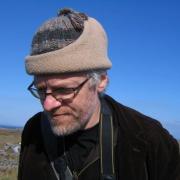
Abstract
Daring to Walk on the Wild Side: Re-examining the Conservation Potential of Urban Parks
Decades of deferred management and a philosophy of "Nature Knows Best" for natural areas in urban parks resulted in losses of both native biodiversity and public connection to parks as destinations for enjoying nature. Over the last 10-20 years, however, a paradigm shift has been occurring that has both benefited the biological status of many parks and improved public perception and appreciation of the local natural heritage they are capable of sustaining. This positive feedback between urban nature and people has come about through improvements in societal capacity building in several areas: diversification of outreach and volunteer activities, the evolution of public-private partnerships for securing long-term funding for natural areas management, and expansion of knowledge, tools and communication networks in restoration ecology to support adaptive management. Because of these factors, the opportunities for enhancing native habitats and biodiversity in city parks are growing, as a new social-ecological dynamic asserts itself. So, how wild can city parks get? Despite size constraints and detrimental effects of surrounding land-use, an answer cannot be assumed yet, but the prospects are more optimistic than in the past. Parks in Louisville, Kentucky will be used as examples to assess plant biodiversity improvement based on historical benchmarks and after restoration experiments.
Speaker Information
Margaret Carreiro became interested in urban nature through her involvement in the New York City Urban-to-Rural Gradient studies of forests while a professor at Fordham University in the 1990s. After accepting a faculty position at the University of Louisville in 2001, she and her students continued similar work on characterizing forest plants and soils along land-use gradients in park woodlands, riparian areas, highway verges, and forested wetlands, all habitats that range widely in their degree of active management. Most recently she has collaborated with the Louisville Olmsted Parks Conservancy on assessing efforts to restore woodland communities after invasive shrub and vine removal. She also views education and outreach activities as a vital civic role for scientists, and is particularly interested in communicating scientific research findings to environmental managers, educators, and the public in order to improve our collective understanding of the value of nature’s ecological services to society. Dr. Carreiro is Chair of Sustainability Education in the University's Sustainability Council, has chaired a Metro Louisville committee responsible for actuating the city's Urban Tree Canopy Assessment, and contributed to the City of Louisville’s Climate Change Action Plan.
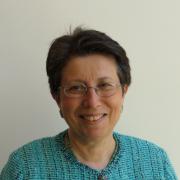
Speaker Information
Dr Mark Bradford is the Professor of Soils and Ecosystem Ecology at the Yale School of the Environment. Bradford’s work focuses on the health, biology, ecology and carbon storage potential of forest, grassland and agricultural soils. He is interested in developing knowledge that allows us to predict how environmental change and management will affect the rates of carbon stabilization and decomposition processes, and hence how the size of soil organic carbon stores change in space and time. Since starting at Yale in 2009, Dr. Bradford has increasingly focused on practice-relevant issues, including experimental assessment of urban afforestation techniques as part of NYC’s Million Trees Initiative.
Dr. Bradford holds a BSc and PhD in Biological Sciences from Exeter University in the UK.
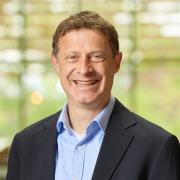
Abstract
Using Public-Private Partnership to Enhance Urban Nature
Since the formation of the Central Park Conservancy in 1980, there has been a proliferation of public private partnerships dedicated to adding financial and programmatic resources to urban parks. The Natural Areas Conservancy uses this organizational model to bring value to New York City’s 10,000 acres of publically owned forests and wetlands. This presentation will explore the unique challenges and opportunities of using private funds to enhance public natural areas, including using science to influence municipal priorities and redefining the public perceptions of urban nature.
Speaker Information
Sarah Charlop-Powers is the co-founder and executive director of the Natural Areas Conservancy (NAC). The NAC is a pioneer in the field of urban conservation, using data and science to develop innovative new ways to manage urban natural areas so that they provide recreation opportunities for diverse users, protect local biodiversity, and provide environmental benefits.
She led the development of a 25 year Forest Management Framework for New York City, a data-driven plan to restore and create public access in 7,000 acres of forested parkland. In 2018, she initiated a new national network with collaborators from 12 cities to advance the field of urban forest management. Sarah has a BA in Economics from Binghamton University and an MEM from the Yale School of the Environment.
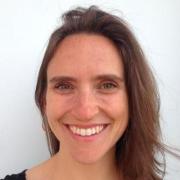
Abstract
Health Department Partnership for Greenways and Trails
In 2006, the Jefferson County Department of Health (JCDH) in Birmingham, Alabama led multiple stakeholders in developing countywide health improvement plan, followed by the organization of dozens of local organizations into the Health Action Partnership for collective impact. The Partnership enabled the county to win major funding to combat obesity. Some of this funding was used to develop a trail and greenway master plan for the county. Since then JCDH has worked closely with the Freshwater Land Trust to help raise funding to build the trail system and promote it to the public. This included a $1 million investment by JCDH to help draw down federal transportation dollars for the system.
Speaker Information
Mark E. Wilson, MD became Health Officer of Jefferson County (Birmingham), Alabama in 2011, overseeing the various programs of the Jefferson County Department of Health. Before taking this position he served on the Jefferson County Board of Health for three years and served for 20 years as a general internist in indigent health care at Cooper Green Mercy Hospital, including several years as outpatient medical director and then chief of staff. As Health Officer, Dr. Wilson helps lead the Health Action Partnership, a collaboration of several dozen organizations and agencies working together around common priorities to make Jefferson County a healthier place to live, work, learn and play. He has a bachelor degree in civil engineering from Georgia Tech and a medical degree from UNC-Chapel Hill.
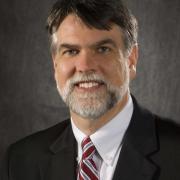
Speaker Information
City Parks Alliance (CPA) is the only independent, nationwide membership organization solely dedicated to urban parks, and is based in Washington, D.C. Since joining CPA in 2004, Catherine has created a national advocacy campaign to increase federal funding for urban parks; developed a suite of community capacity building programs to strengthen local park stewardship; designed a training program on public private partnerships; and established the bi-ennial Greater & Greener international urban parks conference as the premier event for park leaders. CPA also facilitated the Red Fields to Green Fields project, a national research effort with Georgia Tech to convert distressed commercial real estate into productive urban green space. In December 2013 CPA launched a bi-partisan Mayors for Parks coalition to support reauthorization of the Land and Water Conservation Fund. Catherine currently is co-investigator of The National Study of Neighborhood Parks, funded by the National Heart, Lung and Blood Institute of the National Institutes of Health (NIH), which is being conducted by the RAND Corporation and City Parks Alliance with assistance from the Trust for Public Land. The four-year study will observe 170 randomly selected parks in 25 representative American cities in order to understand how local neighborhood parks contribute to physical activity as well as assess park management practices and programming. She holds a Bachelor of Arts degree, Bucknell University; a Master’s degree in Landscape Architecture, University of Pennsylvania School of Design; and completed the Executive Program for Non-Profit Leaders, Stanford University Graduate School of Business.
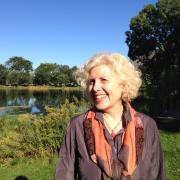
Speaker Information
Brad Gentry is the F.K. Weyerhaeuser Professor in the Practice at the Yale School of the Environment and the Yale School of Management, Senior Associate Dean for Professional Practice at the Yale School of the Environment, and a Director of the Yale Center for Business and the Environment. Trained as a biologist and a lawyer, his work focuses on strengthening the links between private investment and improved environmental performance, with a particular focus on increasing investment in natural areas. He has worked on land, water, energy, industrial and other projects in over 40 countries for private (GE, Suez Environnement, Working Lands Investment Partners), public (UNDP, World Bank, Secretariat for the Climate Change Convention, UNEP) and not-for-profit (Land Trust Alliance, The Trust for Public Land, the Northern Forest Center, SustainableCT) organizations. He holds a BA from Swarthmore College and a JD from Harvard Law School.

Abstract
Blending needs, funding and science to create 21st Century Parks. The 21st Century will be an urban century, whose geography will be shaped by infrastructure decisions. Parks represent one of the most important kinds of urban infrastructure, but they are often relegated to the bottom of the heap. This talk looks at the need and importance of parks as city-shaping infrastructure, but also the challenges and lessons inherent in actually creating a new park system from scratch.
Speaker Information
A native of Louisville, Kentucky, Dan holds degrees from Yale University (B.A. in Chinese Language and Literature, and a Masters in Forestry.) and Indiana University, Bloomington (Ph.D. in American and World History). He started his career as an educator, teaching at Franklin College in Indiana and the University of Louisville. He then worked in real estate management and development. In 2004, he founded “21st Century Parks,” a non-profit corporation developing The Parklands of Floyds Fork, the largest and fastest moving fully funded metropolitan parks project in the country. He currently serves as the Chairman and Chief Executive Officer of 21st Century Parks, where he oversees fundraising, planning, design, construction, and operations of the new parks. In addition to his work with parks, Dan occasionally teaches an Honors Seminar at the University of Louisville entitled “Reading the Forested Landscape,” which takes students into the field to study everything from ancient geological landscapes to modern urban planning. He is married with four children, and enjoys walking, running, snow skiing, and reading. He is also a news junkie, with a strong interest in world politics and culture.
